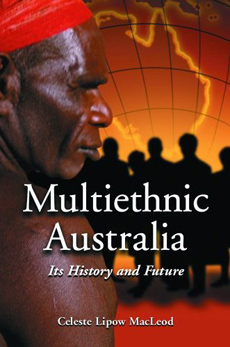|
INDIGENOUS PEOPLES
Chapters Five and Six describe the experiences of the Indigenous peoples (or Aborigines) in the 19th and 20th centuries. Expanding British settlements destroyed their nomadic way of life while many of their children were forcibly taken away in an effort to wean them from their traditional cultures and "civilize" them. Chapter Six relates how, starting in the 1920s, some Indigenous leaders organized movements to demand rights for their people; after World War II other leaders led campaigns for the return of their ancestral lands. The second half of Chapter Eleven updates these movements and puts them in the context of political issues of the late 1990s.
AUSTRALIA'S IDENTITY
Underlying the book's narrative is the question of where the country belongs. Is it a displaced Western nation with binding ties to Britain, a part of the region where it sits, or a combination of the two? Multiethnic Australia, which argues for the third view, covers other aspects of Australia's identity as well. The main ethnic and religious conflict of the 19th century, Chapter Three brings out, was British Protestants versus Irish Catholics. But the biggest divide was social class. The third chapter also shows how workers organized trade unions (recruiting former convicts and the much larger numbers of free immigrants), later formed a Labor Party and turned the country into the “Fair-Go Society.” This gave Australia a strong egalitarian ethos, a characteristic that survives to this day.
|
